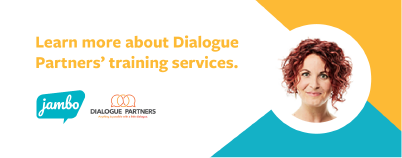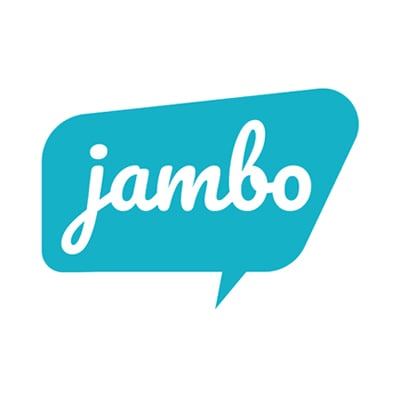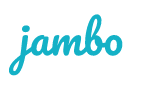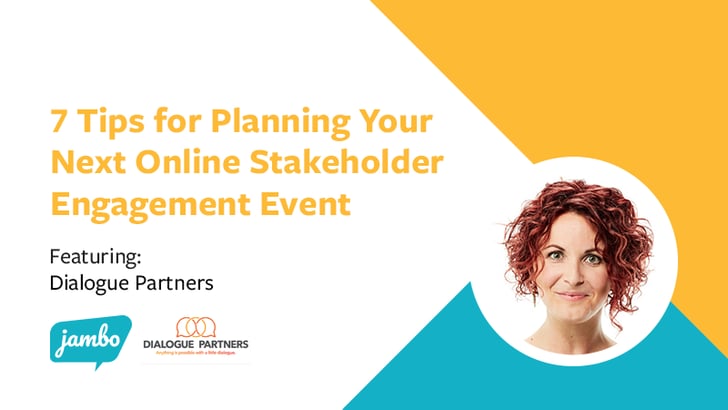
Joining Jambo for this Q&A blog is Kim Hyshka, Principal at Dialogue Partners. Kim has been a leader in the field of civic engagement and public participation for over a decade (for Kim’s complete bio, visit the About Dialogue Partners page).
“High stakes, high impact projects. We open possibility, cultivate collaboration and spark change through dialogue. We involve the community, bringing people together to facilitate conversations that make an impact.” – Dialogue Partners
In today's blog, we'll cover:
- Foreword: The engagement space has changes, and it's not going “back to normal”
- What are some benefits of running online engagement events?
- What kind of online engagement are we talking about today?
- Letting go of your need for control
- Dialogue Partners' experience on changing expectations
- What are 7 tips for planning online stakeholder engagement events?
- Know what things will take longer than you think
- People will only sit attentively for 60 - 75 minutes
- You must do a full practice run of the event
- It take more people than you think to run an online event
- Don't treat it like a meeting. Arrive very early with your team and prepare for the event
- Have a plan for when it goes sideways
- Know how your team will communicate behind the scenes
- How can Dialogue Partners help people on this journey?
Foreword: The engagement space has changed, and it's not going “back to normal”
While it’s been said a hundred times before, the COVID-19 pandemic has wildly changed the landscape of engagement, and it’s important to accept that it will never go back. Over the course of this pandemic, we’ve created a “new normal” with “new expectations” for how people engage, when they engage, and what’s available to them when they do engage.
Pre-pandemic, everyone expected the one evening event and maybe the one-weekend event. But now we’re in a space where time, time zone and date for events almost don’t matter as much because of our online events, which have opened up people’s ability to participate.
With that said, I wholeheartedly believe we will want to get back together in person, but, going forward, stakeholders will expect both online and in-person options, so we need to learn how to adjust to these new expectations.
Today, I’ll share tips on how to plan your online events. These are for anyone new to this or for anyone who wants to improve their online events.
Looking for some tips on trends and best practices in stakeholder engagement? Check out the blog with Dialogue Partners!
Back to the top!
Q: What are some benefits to running online engagement events?

- Makes it easier for people to attend and extends the reach of participants: We’re seeing so many new people coming to online events that would not have been able to participate in our in-person events. I am amazed at how effective the 1:30-3:00 pm timeslot is for people! Before, you would have never hosted an event at that time on a weekday, but I do them all the time now, and they are very successful. Because people are already at their computer, it’s easy to tune in at that time. And for people like stay-at-home parents; they can tune in when their child is taking a nap. This opens events to many people who would have otherwise felt excluded or who could not have joined in-person.
- Less expensive so you can extend the number of opportunities you offer: It’s way cheaper to run online events because you’re not paying for a booking, food, or printed materials. Generally, these online events can cost 70-80% less than in-person events. So now, instead of running one event that costs you $25,000, you can run multiple events for the same price and offer even more value to your stakeholders.
- You can record your sessions and extend the way you reach participants: While you don’t have to record the whole thing, you can record the main pieces and share it afterwards with participants who couldn’t attend the live event. This recording now becomes another touchpoint for people to engage with your organization. You can even count the number of views on YouTube for the number of people who watched, which is another great way to track involvement that we wouldn’t have had with our in-person events!
Back to the top!
Q: What kind of online engagement are we talking about today?

Before you begin planning your event, you need to know which category of online engagement you’re operating in.
When people think of online engagement, it really depends on what kind of engagement you’re talking about for these seven tips to be worthwhile, so I’ll break down the three categories of online engagement that I see:
- Pre-COVID-19 online engagement: Pre-COVID-19 online engagement took the form of online surveys, online discussion forums, polls etc. In this category, people use different engagement software that works almost like a portal or a window, allowing people to interact with the content from the comfort of their home. But one of the key distinctions for this type of online engagement is that it’s very much one-to-one (one person, one website). While you might interact with people in the forums, it’s rarely in real-time. In my mind, this type of engagement is not real-time; it’s in your
- Early-COVID-19 online engagement: (I should note, this existed pre-COVID-19, but it really came alive early in the pandemic). This was when everyone realized they needed to do something, but there was fear around letting people talk (e.g. allowing people to unmute themselves), so people stuck mainly to webinars. Here we saw a real burst of people using Zoom and Microsoft Teams with interactive background tools (like polls). While this was real-time, it is still very controlled. People need to be unmuted to speak, and while you can submit comments, there’s often a moderator who will decide which ones to read. It’s online engagement where information is primarily pushed out, with a little bit coming in (but quite controlled).
- 6 months into COVID-19 online engagement: Here, we started to see live/real-time/fully integrated facilitated online events. These operate like our regular in-person events, where there’s unfiltered interaction with people and deep dialogue, but online.
In today’s blog, I’m not talking about category one. There’s great content out there on this type of online engagement, but that’s not what I’m talking about today. Some of the tips I share will connect with the online webinar from category two, but where I’m pushing people to move is towards opening up the real-time dialogue because that’s where we get the richest feedback and the most valuable input. So, today, we’re focusing on category three.
Back to the top!
Letting go of your need for control
 Before we jump into the tips, it’s important to understand that we must let go of our need to control everything. If you’re going to get the most out of the online engagement space, you’re going to have to be ok with the fact that there will be some unknown variables.
Before we jump into the tips, it’s important to understand that we must let go of our need to control everything. If you’re going to get the most out of the online engagement space, you’re going to have to be ok with the fact that there will be some unknown variables.
- You don’t always know who’s coming.
- You don’t always know what they will say.
- And, for better or for worse, you can’t always see them.
I’m not saying this to put fear into people, but it’s really important that if you’re going to do this well, then you need to walk in knowing that there are unknown variables and that it’s ok.
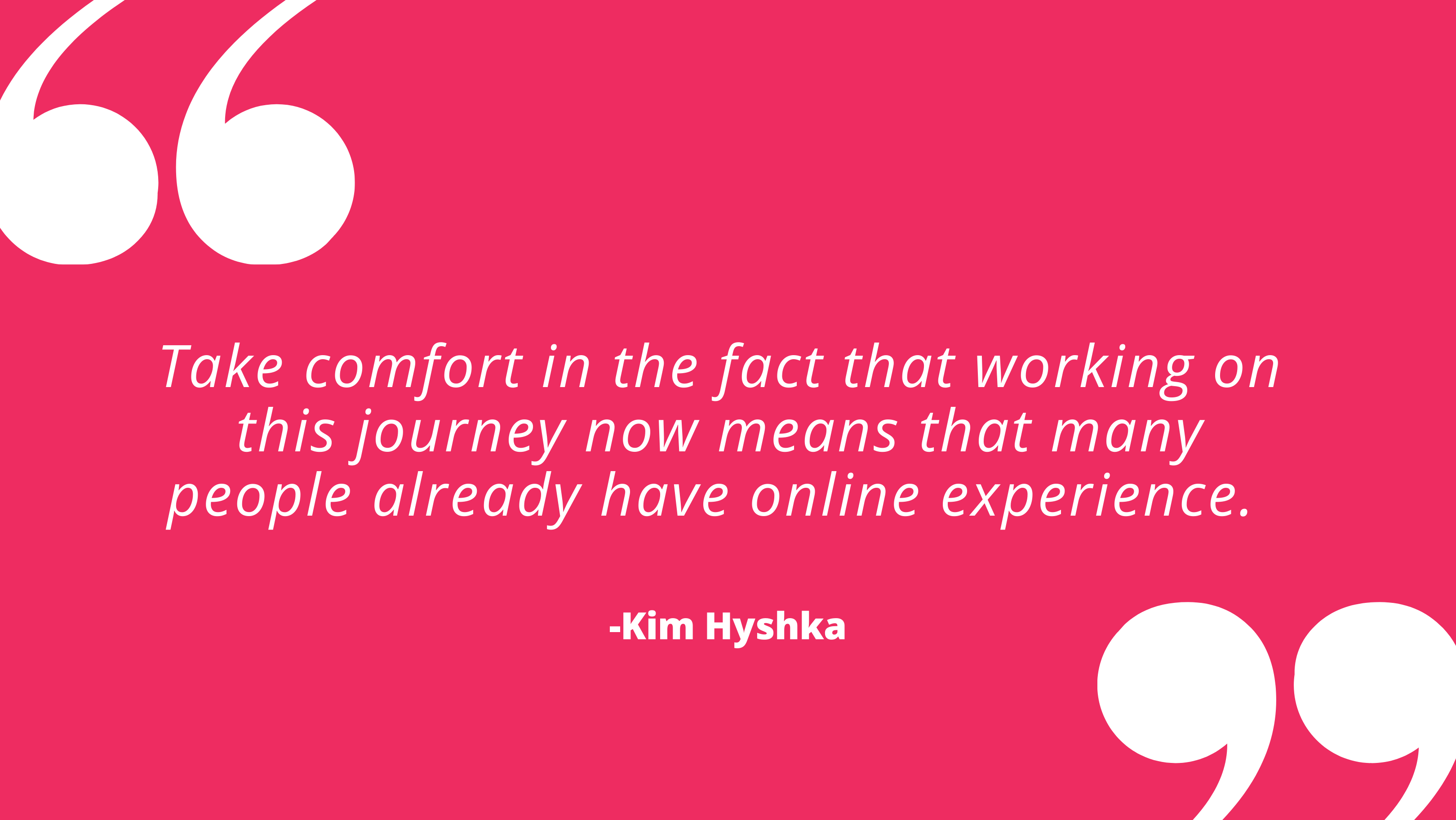
Take comfort in the fact that working on this journey now means that many people already have online experience. You get to ride the wave of knowing most participants have already been talking to their families, friends and coworkers online. Pre-pandemic, this was brand new, but now people have some baseline skills they can work with, which will help your events.
Back to the top!
Dialogue Partners' experience on changing expectations

Last summer, while numbers were low, Dialogue Partners worked with an organization who wanted to do some engagement with a Northern community. The community requested an in-person event, so the organization wanted to honour that request. This was the first opportunity for us to run an event with 25 people in the room and 25 people on Zoom simultaneously.
Was it perfect the first time we did it? No, but this ensured that everyone who wanted to attend could pick the mode they felt safe with and preferred.
My point is that we will miss meeting community or stakeholder expectations if we expect to go back to the way things were before. We will still have in-person events, but before COVID-19, we either engaged in person OR online. I believe that OR no longer exists, and Post-COVID-19, we will be expected to engage in person AND online—that OR will switch to an AND.
Back to the top!
Q: What are 7 tips for planning online stakeholder engagement events?

1. Know that things will take longer than you think
The reality is, you can’t cover the same amount of content online as you can in person because everything moves slower online due to challenges that can arise when using technology with a group of people. To meet these challenges, reduce your planned online event times by 20%-30%.
As an example of how things can move slower, think about how we’ve all been in the meeting where someone starts talking, and they’re on mute, and then everyone has to say, “you’re on mute!” Then the person stops, finds the right button, apologizes, and then speaks again. That right there probably took about 45 seconds, so think about adding 45 seconds at least 10x over a three-hour-long session—that alone will cause things to slow right down.
Additionally, you need to give discussion introductions and technology introductions. For example, for an in-person event, I would have simply said, “At your tables, I want you to talk about x, y, z. Go ahead,” and in an instant, people would be talking. Now, you need to take extra time to explain to people exactly what you want them to discuss, how they will discuss the topics, and what you will be using (i.e. what technology) to facilitate the discussion. These additional instructions and introductions will need to be accounted for in your time.
2. People will only sit attentively for 60 - 75 minutes
After 60-75 minutes, you must plan for people to stand up and move around. We know about Zoom fatigue, so if you want to create a positive experience and get the best data from your stakeholders, they need to be in the best mindset, and that means that every once in a while, you need to get them to move around.
However, if you’re hosting a 90-minute session, you can probably go without a break, but if you’re going any longer than 90 minutes, you need to plan for breaks. While the breaks don’t need to be too long, plan to give people a couple of minutes to stand up and move around before rejoining the session.
Tip:
Practice what you preach! If you’re giving your participants a break, you should take one too. You probably won’t take as long as them, but give yourself a minute to reorient yourself and readjust; however, don’t check your email! Breaks are not the time to check your email; they are a time to get centred again.
3. You must do a full practice run of the event
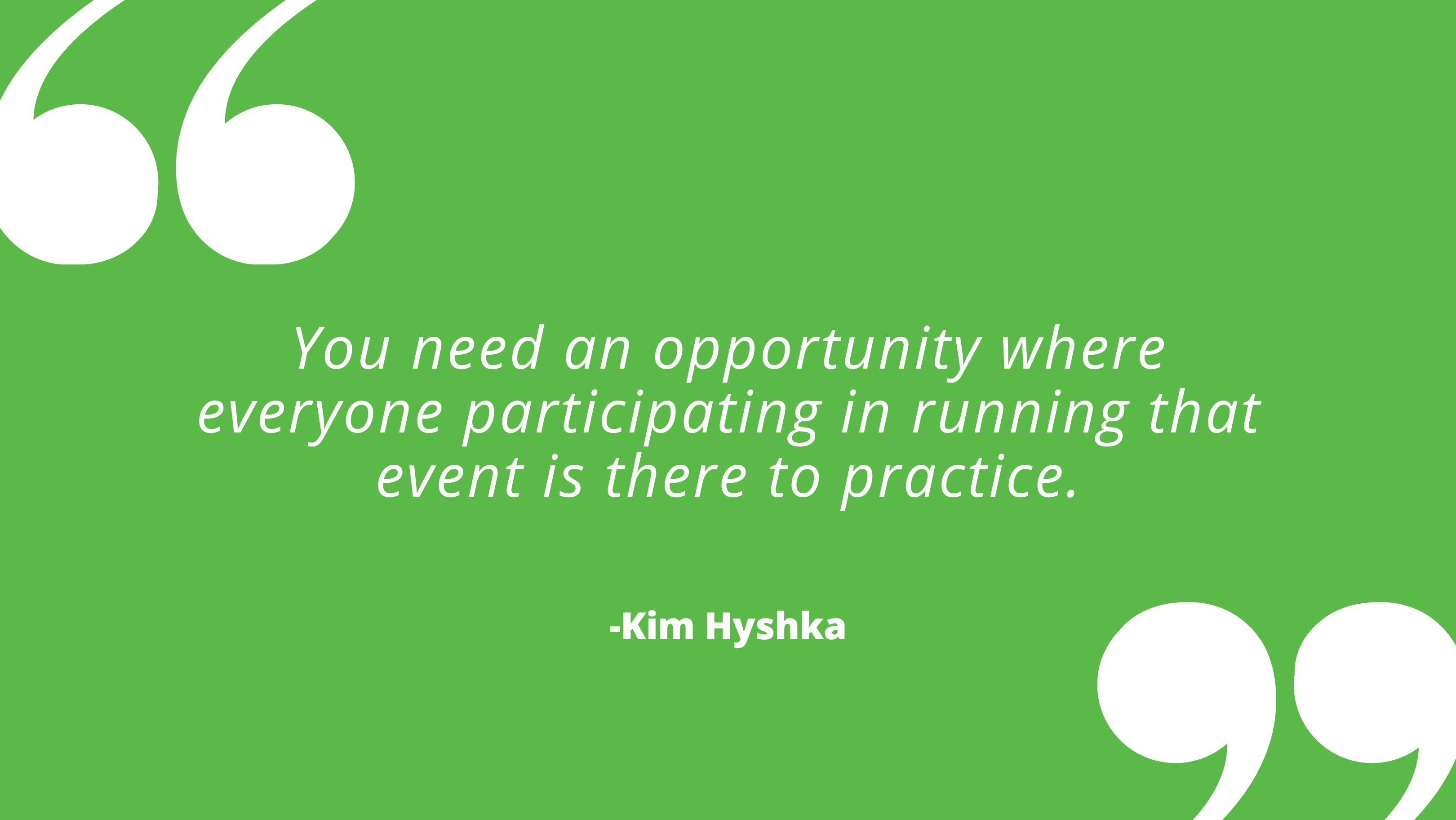
If you’re running an online event, you need a dress rehearsal, just like they do before a theatre production. You need an opportunity where everyone participating in running that event is there to practice.
In the run-through, you need to have all your materials ready to go. You need to have all your slides prepared, all your speaking notes ready, and then everyone runs through the event as if there’s a live audience there.
Tip:
Don’t make the mistake of just assuming your participants will sit quietly in the background—prepare for comments and questions!
To prepare, grab some colleagues to be your stakeholders during the run-through. This is effective because your colleagues know who your stakeholders are, and they know what kinds of things they’ll say, so get them to be there and pretend to be your stakeholders. I have found this especially useful when things are controversial.
Tip:
Be in the space where you’ll be hosting the live event—This is especially crucial for whoever is leading the event.
If you’re running it live at home, be at home for the run-through so that you’re practicing with the same internet hookup, laptop, microphone etc., that you’ll use for the live event. I’ve seen people practice from their house, and then for the real event, they go to their office thinking it will be better, but then they’re flustered because it’s not the same environment.
As I said initially, there are many unknown variables but do not let the unknown variables be things you could have controlled. You can control your internet connection, your headset, your laptop, and the space you’ll be in. The dry run is about finding problems and reducing variables. While your participants will bring a lot of unknowns, you should not have any unknowns.
4. It takes more people than you think to run an online event
There was a myth in the early days that online events didn’t require many people to run; however, for an online event to go well, your backstage crew is quite significant.
To utilize your team to their full potential, everyone should have a role and a description for that role, so everyone knows exactly who is responsible for what and when. While five key roles must be filled, you might expand the number of people in each position, depending on the size of your event.
Tip:
The number one role that everyone forgets about is chat box responder. This is the person whose job and whole focus is creating a thoughtful and relevant interaction in the chat. This is vital because if you want to curate conversation, you have to give it some energy, so someone needs to be responsible for this role. There’s nothing worse than a repetitive and lacklustre response like: “thanks for that.” We all know this type of response is boring and not genuine because it’s not how you would speak in real life.
Tip:
Make sure you have tech support who does nothing else but sit by the phone, on a local number, ready to help. So, if someone is struggling (e.g., they can’t connect or their mic’s not working), there’s a number they can call to talk to a human who will help them with their tech issues.
Nothing derails an online session quicker than:
- “My microphone isn’t working!”
- “Where’s the chat?”
- “I don’t know how to find the button!”
- “Where’s that link?”
These types of questions destroy the session’s energy when there’s no quick help available. Have a designated support person ready, so you can say, “No problem, Joe! We’re going to get somebody to help you. I’m typing a number in the chat right now. You’re going to call Margaret, and she will look after you.”
While I haven't needed this number a ton, I've been so grateful to have that role covered every time I have needed it. Joe feels like he’s being looked after, the rest of the group isn’t annoyed that we’re spending a lot of time on Joe’s problem, and then the session can move forward.
5. Don't treat it like a meeting. Arrive early with your team and prepare for the event
We have a tendency online to arrive right when things are starting, but would you ever go to an open house and arrive one minute before your participants? Of course not! You would get there early to ensure that the power is on, that your brochures are out, and that your team has had a kickoff meeting. You would never treat an in-person event that way, so your online event requires the same level of attention and care.
My team is always online 45 minutes before we go live, and I’m on an hour before to get into the headspace that I need to be a leader for my team. We check our tech, screen sharing, microphones and make sure everyone is comfortable with their roles during this time. The best part is, if you’re ready 20 minutes early, you all mute your mics and turn off your cameras and have a bit of a rest, grab a coffee and then come back to get started.
There is a risk in treating an event like a meeting. An online event is not the same as your staff meeting; it needs a different level of attention and care if you want it to run smoothly, get the data you need and create a positive experience.
6. Have a plan for when it goes sideways
Remember those unknown variables we talked about earlier? Well, you want to have a plan in place for when things go sideways. What happens when someone starts yelling in the chat box or when someone takes over the main page? You need a plan just like you would have for an in-person event.
With your team, have taken some time to have thought through a variety of scenarios. It’s primarily in the chat box where I’ve experienced things going off the rails. While it’s much harder to come off mute to yell at someone, it’s so easy for the chat box to explode, so keep that in mind.
.png?width=3240&name=Dialogue%20Partners%20Blog%203%20(1).png)
We’ll be addressing this more in our next blog with tips for diffusing conflict during online stakeholder engagement, so stay tuned for some tools! But for now, just know that you need to have a plan and have talked with your team about how it could go wrong, where it could go wrong and who is addressing it when it does go wrong.
7. Know how your team will communicate behind the scenes
Have a plan for how you and your team will communicate amongst yourself in a way that’s not awkward.
Tip:
Using direct message in Zoom is not a good idea! I guarantee that when you are under pressure, trying to make quick decisions, or things are heated, you will type things into what you think is a private message on Zoom, and it’s accidentally going to go to everyone. There is no taking this back when it happens, and there is no erase button for it.
So, have a plan for how your team will communicate outside of Zoom (or whatever platform you’re using for your online event). This could be a group text or your organization’s internal communication tool, but choose what works best for you and your team.
Tip:
Email is not a good option because it takes up a ton of resources and, generally, when you are running a session, you want to be able to use something that’s conducive for the experience.
Back to the top!
Q: How can Dialogue Partners help people on this journey?

We’ve been really grateful that nearly all our clients have joined us on the online engagement journey. We’ve done everything from hosting cross country conferences for 300 people to facilitating community conversations with 50 people online to helping people think through how to run an online one-to-one interview. We’ve been really lucky that we’ve experienced everything from huge groups of people to intimate discussions and have been able to help our clients plan and host for each scenario.
We understand that all these events (large or small) are important and are all valuable. We also understand that each online event has unique needs, and so we’d love to work with you and your organization if you’re looking for any level of support!
Back to the top!
